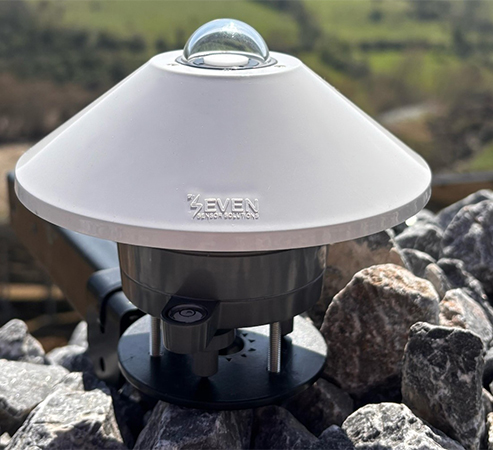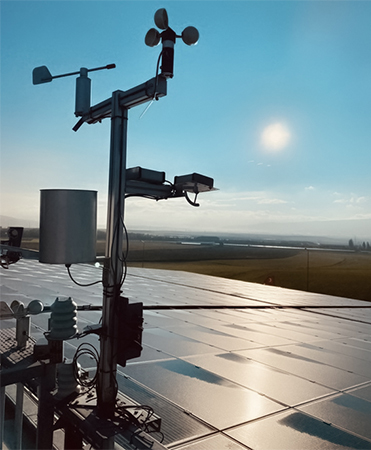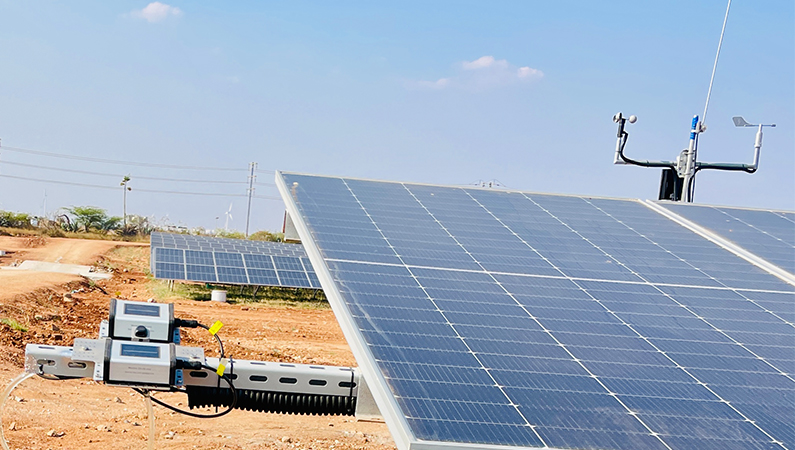As solar energy systems are increasingly installed in some of the world’s hottest regions, ensuring the accuracy and durability of monitoring sensors in extreme heat has become a real concern. Heat stress can affect both electronic and mechanical components, leading to inaccurate readings, signal degradation, or even complete sensor failure.
What Happens to Sensors in High-Heat Conditions?
Operating in high temperatures is not just uncomfortable for humans—it is tough on electronics too. As the sensors are installed outdoors and generally exposed to direct sunlight for several hours, this constant heat exposure can wear down components in several ways.
-
Electronic Drift and Degradation
High heat can affect the electrical properties of components such as resistors, capacitors, and the IC used in the electronic card of the sensor. As a result, sensors may drift from their calibration points, generating inaccurate measurements. For precision devices like pyranometers and temperature sensors, even small changes can affect the accuracy of the data collected.
-
Material Expansion and Mechanical Stress
Thermal expansion can cause sensor materials to warp or crack. This is especially a problem in sensors with tightly packed internal components or rigid housing. Repeated heating and cooling cycles, which is common in desert or arid regions, can also lead to fatigue, loosening seals or damaging internal structures.
-
Signal Instability
In hot environments, increased thermal noise can interfere with the sensor’s signal output. This can make it harder for the system to distinguish real trends from background “noise,” which complicates data analysis and can cause false alarms or missed alerts.
-
Accelerated Wear and Aging
Everything from solder joints to adhesives can degrade faster in extreme heat. Components that are expected to last for years under normal conditions might fail prematurely if regularly exposed to high temperatures without proper protection.
SEVEN Sensors: Engineered for High-Temperature Performance
Understanding that PV installations are often located in desert regions or sun-drenched open fields, SEVEN engineers have developed sensors by prioritizing the high-temperature durability.
Key design choices include the use of temperature-resistant materials, UV-resistant housing, and high-precision components that maintain their accuracy even in elevated temperatures. Whether it is an irradiance sensor or a thermopile pyranometer, each SEVEN sensor undergoes several tests to ensure it can withstand high temperatures up to 85°C.

In addition, SEVEN includes ventilation features to avoid the moisture generated by fast temperature changes inside the housings. These features help keep sensor electronics within safe operating ranges, even when outside temperatures exceed 50°C.
Proven Performance in Harsh Climates
SEVEN sensors are already being used successfully in some of the hottest countries around the world, including Saudi Arabia, the UAE, India, Egypt, Mexico, and Australia. These regions regularly experience extremely high Temperature daytime, intense solar radiation, and dry, dusty conditions. Although these challenges, SEVEN’s sensors continue to deliver accurate and stable readings over long operational lifespans.

SEVEN’s approach shows that it is possible to design sensors that not only survive but thrive in extreme heat. By focusing on materials, structure, and heat management, SEVEN has created a range of sensors ready for the toughest environments. For PV operators working in high-temperature regions, this means reliable monitoring, fewer failures, and confidence that the data they rely on is as solid as the sun overhead.
